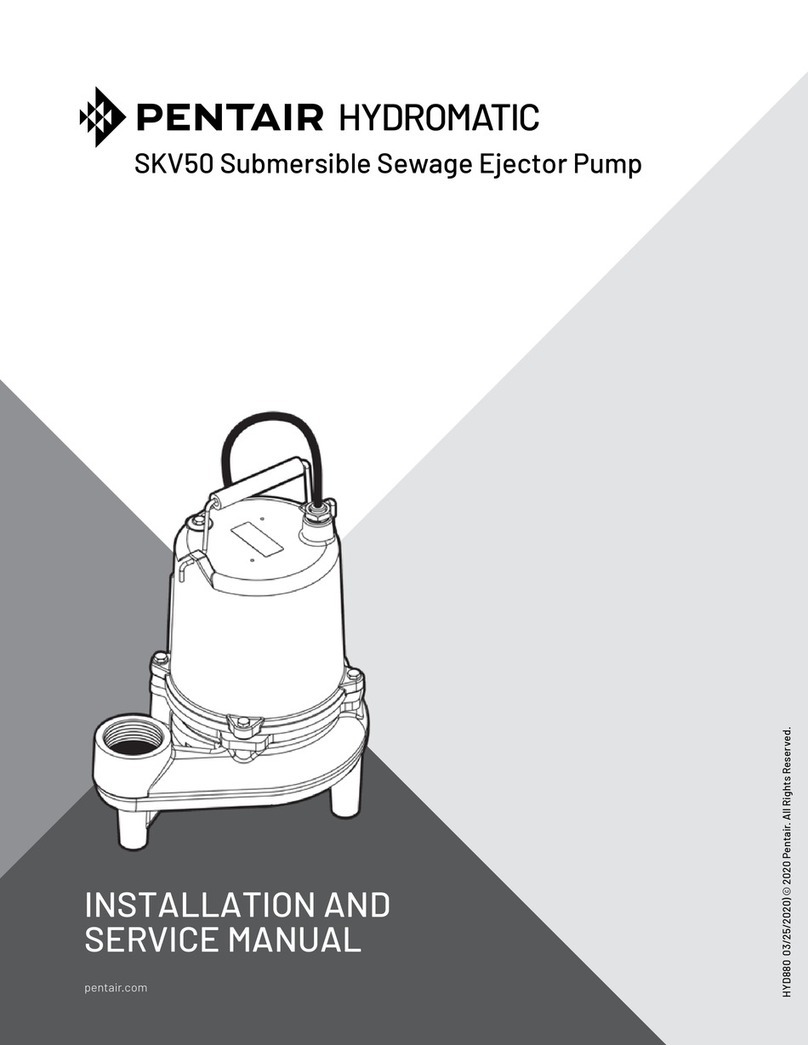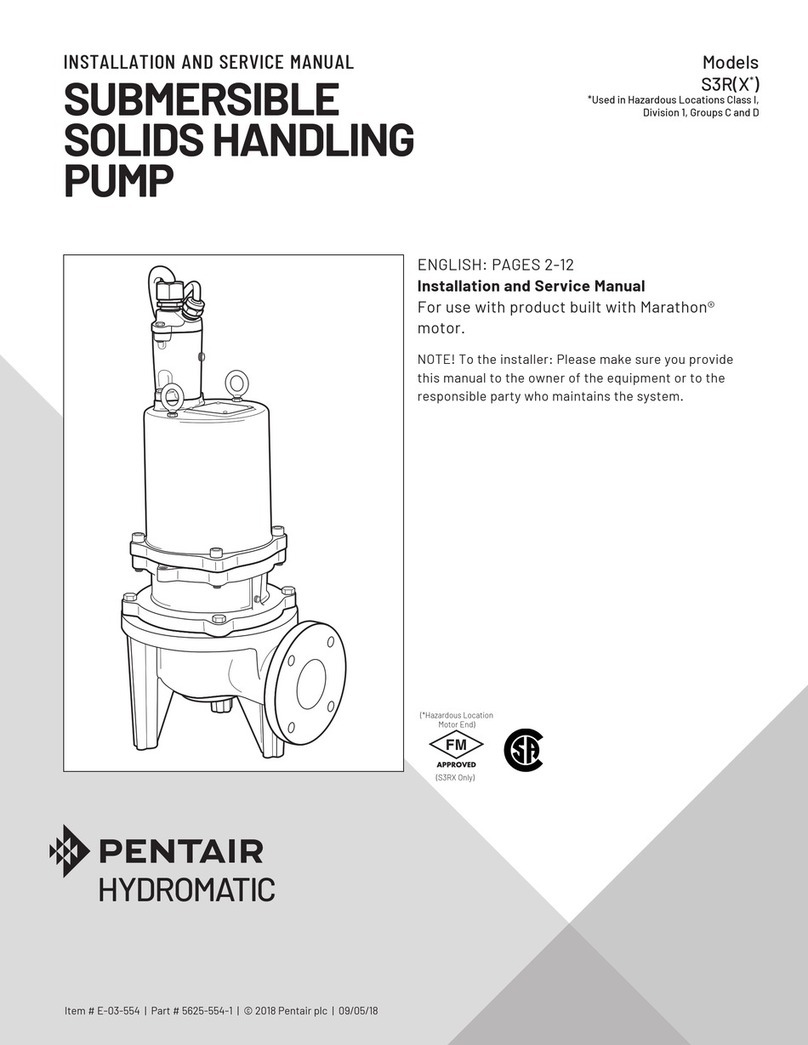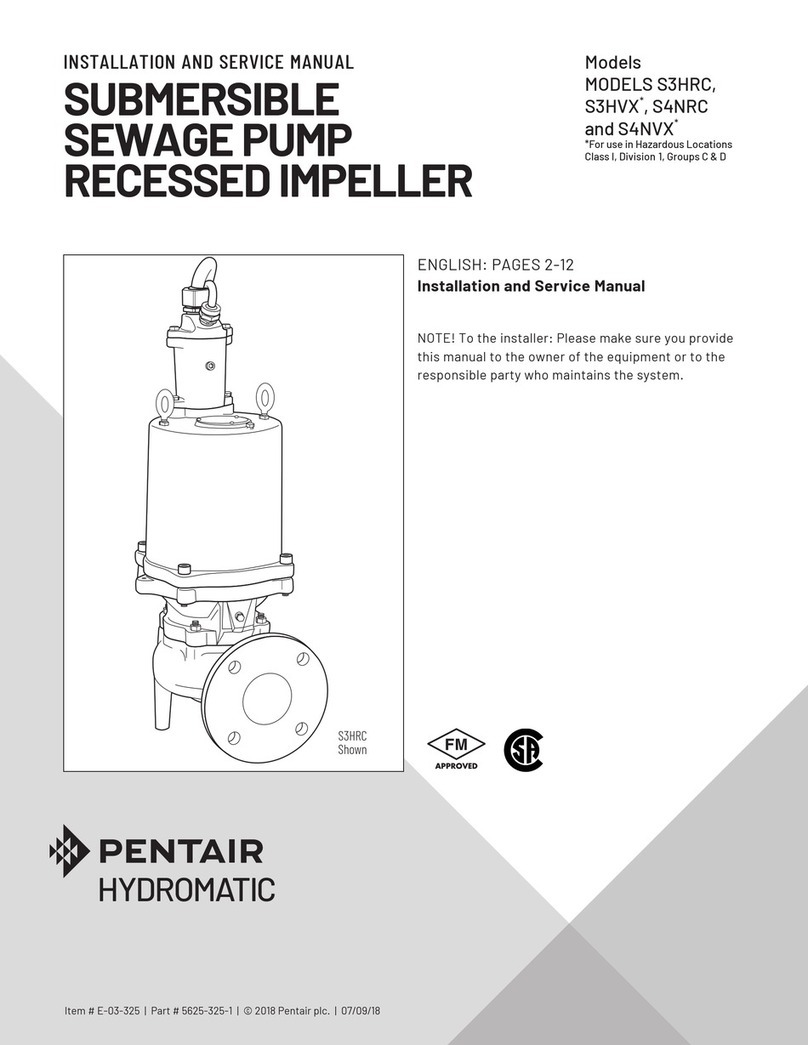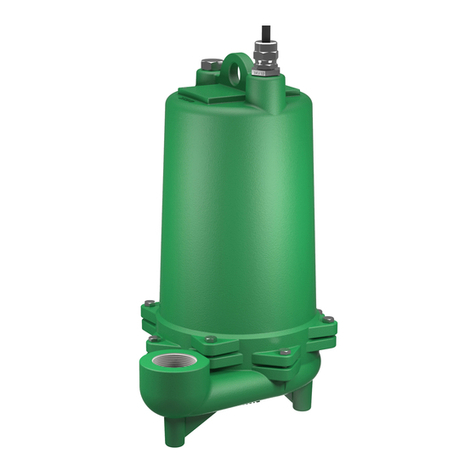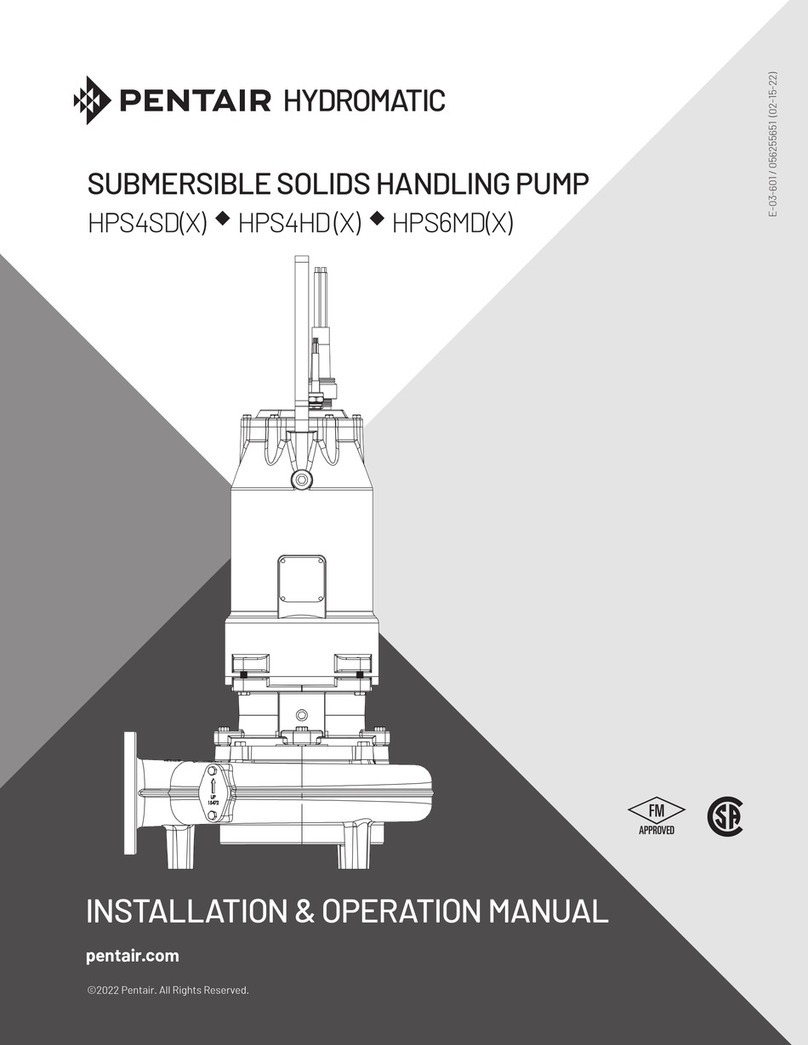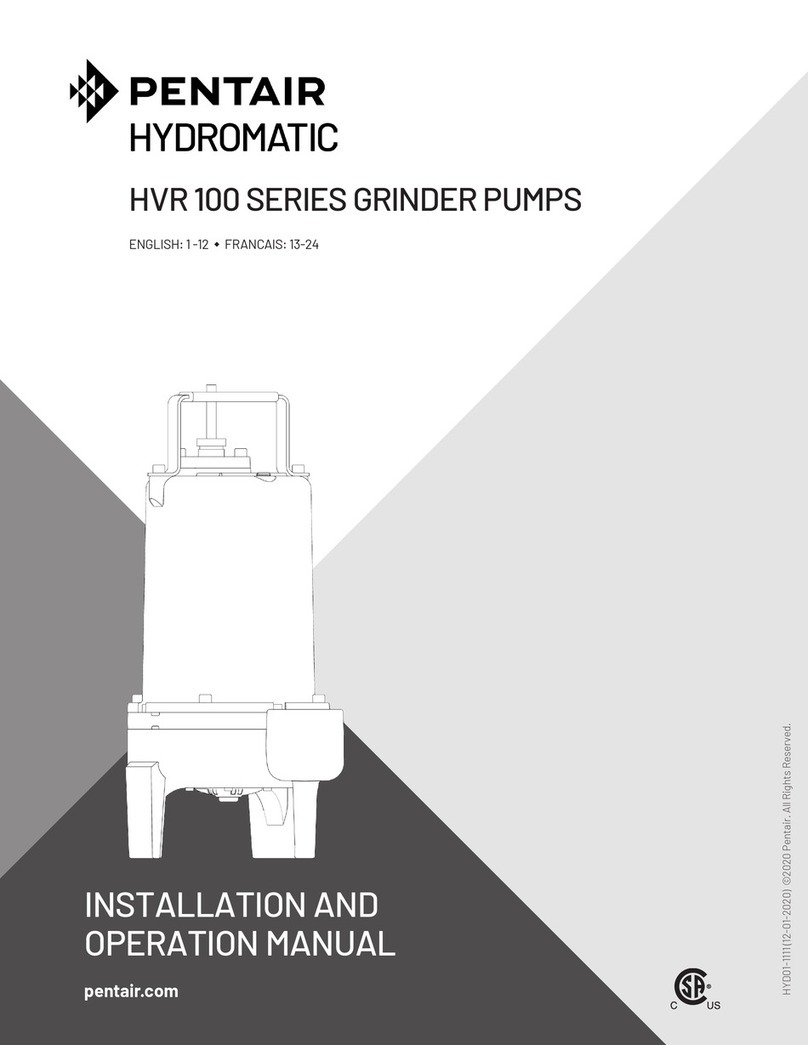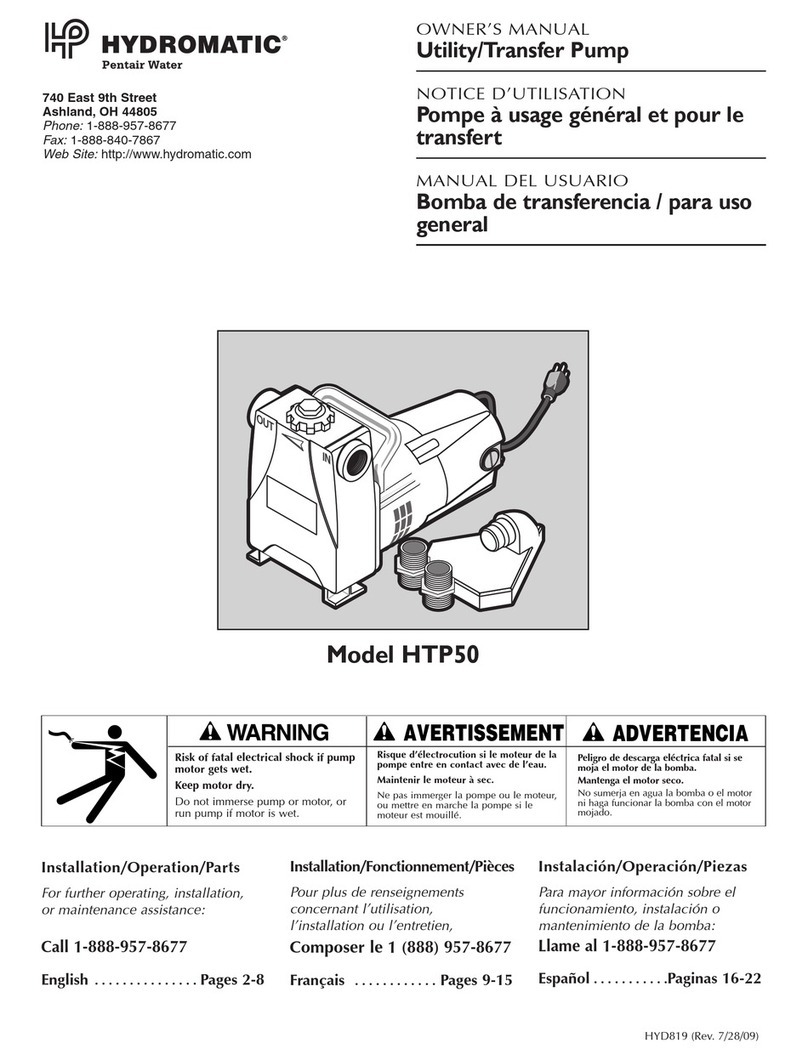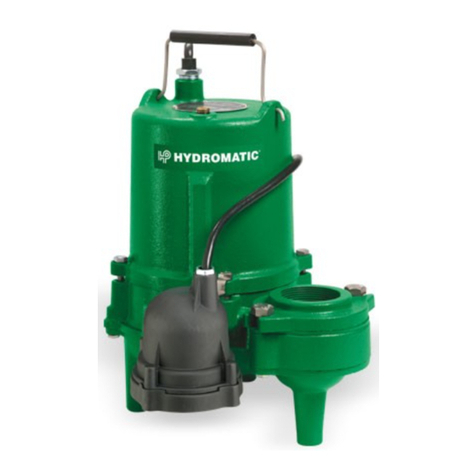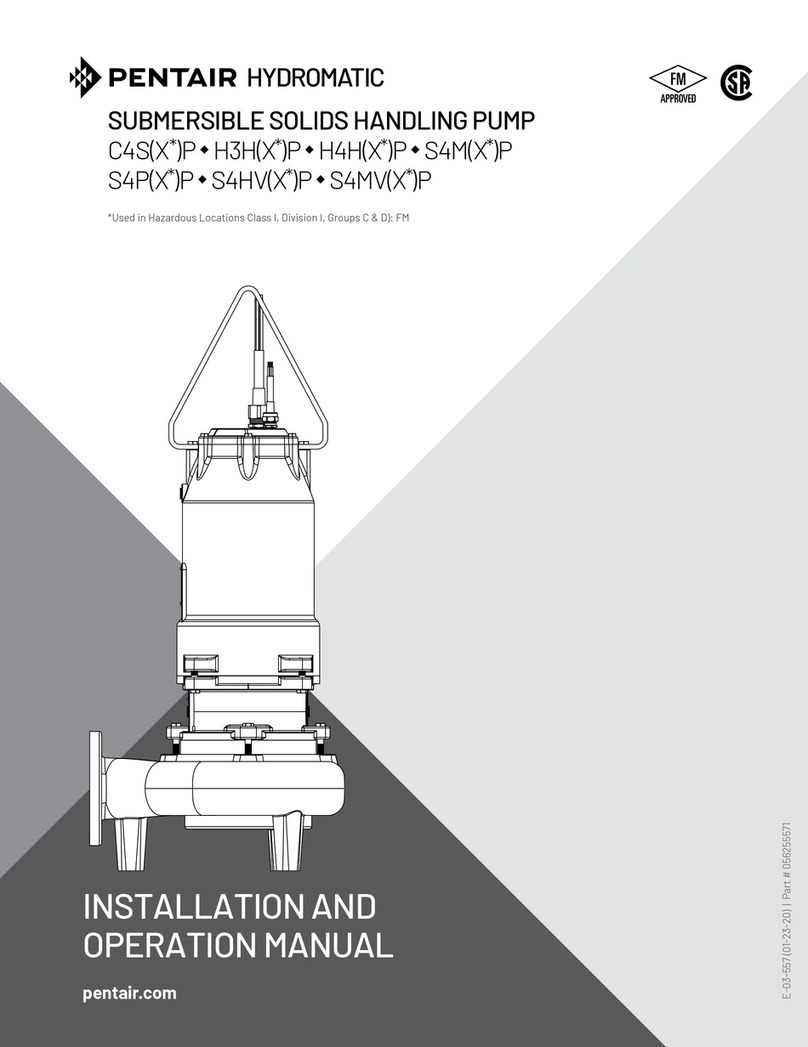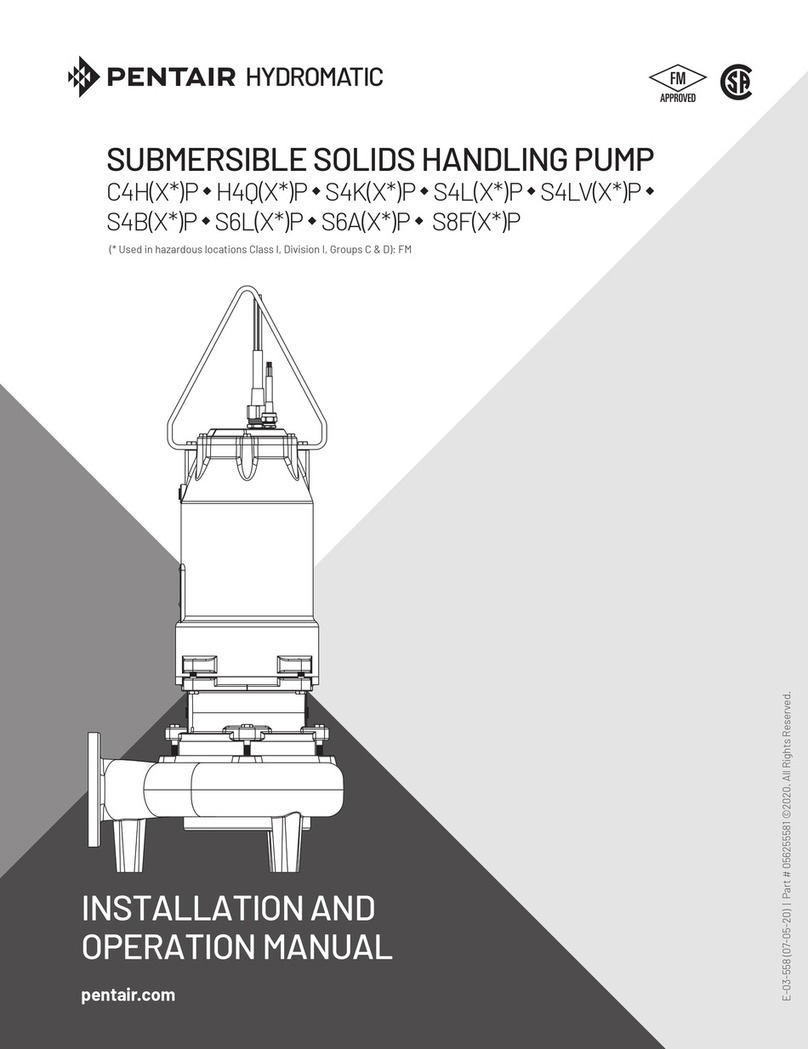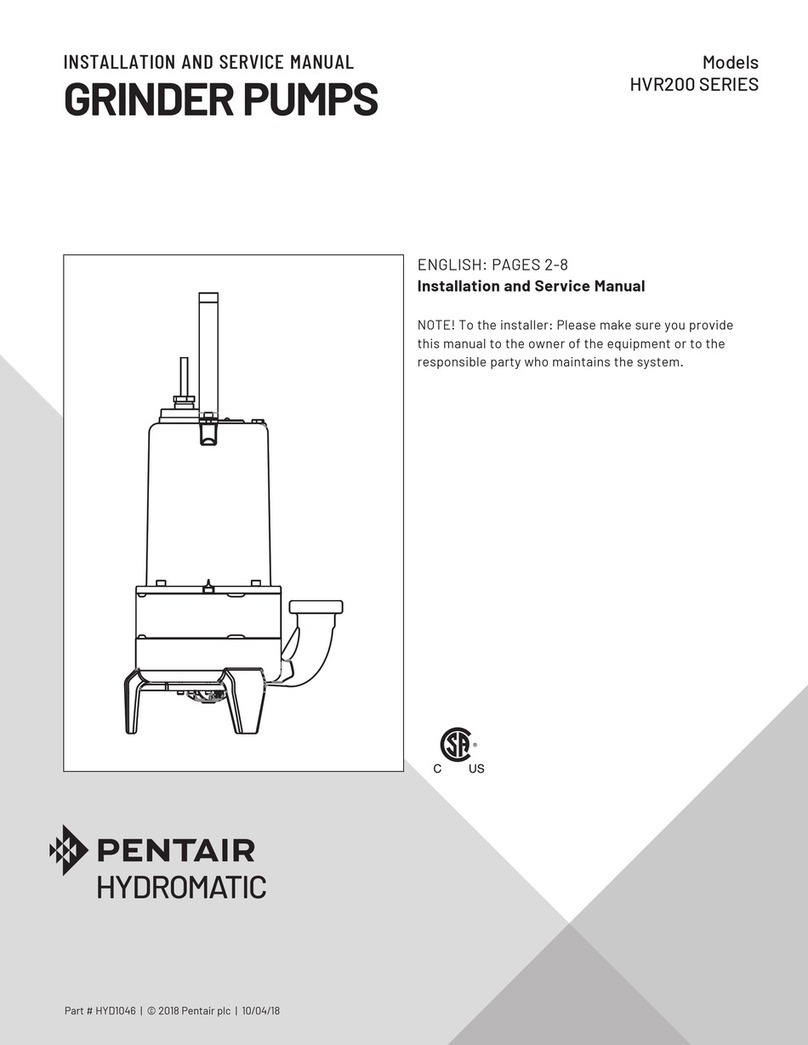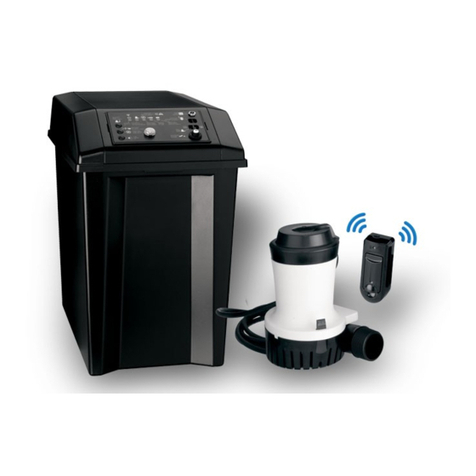
4E-03-503 (07/31/19)
PUMP INSTALLATION, OPERATIONS & MAINTENANCE
Alarm Controls:
The alarm level is usually set above the override level so the alarm will signal
only if the override level is exceeded. The alarm level may be set below the
override level as it is possible for one pump to fail and the other pump to
operate on the override level with the sump level never reaching the alarm
level. This approach is particularly applicable in cases of low inflow capacity.
Electrical Control Panel:
Pentair Hydromatic* electrical equipment is installed in a weatherproof
NEMA 3R enclosure. The electrical equipment includes a main circuit
breaker, magnetic starter with overload protection, H-O-A switch and
run light for each pump, electric alternator and a transformer to provide
appropriate control circuit and alarms.
INSTALLATION
Installing Pump in Sump:
Before installing pump in sump, lay it on its side and turn impeller manually.
Impeller may be slightly stuck due to factory test water, so it must be broken
loose with small bar or screwdriver in edge of vanes. After breaking loose,
the impeller should turn freely.
Clean all trash and sticks from sump and connect pump to piping.
A check valve must be installed on each pump. A gate or plug valve in each
pump discharge line is also recommended. This valve should be installed
on the discharge side of the check valve so if it is necessary to service the
check valve, the line pressure can be shut off.
NEMA 4 Junction Box: (Optional)
For pumps 60 HP and above and if an electrical control panel is to be set
remote from the pumps, a NEMA 4 junction box must be used to make power
and control connections. The Pentair Hydromatic NEMA 4 junction box is
provided with compression connectors for sealing all wires. No sealing
compound is needed to make connections waterproof.
Wiring diagrams are provided with the panel for making connections.
The size wire to use from panel to sump depends on motor size and
distance in feet.
Be sure each wire is checked so that an incorrect connection will not be
made. An ohmmeter or Megger® can be used to check wire continuity.
Installing Float Switch Controls:
The controls are supported by a mounting bracket that is attached to the
sump wall, cover, or to the NEMA 4 junction box. Cord snubbers are used to
hold the cord in place. Control level can be changed at any time by loosening
the snubber and readjusting cord length.
In either duplex or triplex systems, the bottom of the lower or turnoff
control is set just above the top of volute, so that the volute will always be
submerged during the pumping cycle. The second, or turn-on control, is set
about 24" above the lower turnoff control.
Distance between turn-on and turnoff controls may be increased, but may
result in sewage becoming septic or a higher amount of solids than the pump
can handle. A frequent pumping cycle is recommended for ideal operation.
In a duplex system, the third or override control is usually set about 6" above
the one pump turn-on control.
In a triplex system, the third or override control is usually set 24" above the
one pump turn-on control, and the fourth or second override control is
24" higher.
If an alarm system is used, this control is usually set about 6" above the
override control.
Making Electrical Connections:
All electrical wiring must be in accordance with local codes, and only
qualified electricians should make the installations. Complete wiring
diagrams are glued to the inside cover of the panel. All wires should be
checked for grounds with an ohmmeter or Megger after the connections
are made. This is important, as one grounded wire can impact operation
effectiveness.
NOTICE: If equipment is not properly wired and protected as recommended,
the warranty is void.
Heat Sensors and Seal Failure Connections:
Be sure heat sensor wires are connected in series with the starter coil.
Connections are provided on the terminal strip.
PUMP OPERATIONS
Starting System:
1. Turn H-O-A switch to OFF position and then turn on main circuit breakers.
2. Open all discharge valves and allow water to rise in sump.
3. Turn H-O-A switch to Hand position on one pump and notice operation.
If pump is noisy and vibrates, rotation is wrong. To change rotation,
interchange any two line leads to motor 3ø only. DO NOT INTERCHANGE
MAIN INCOMING LINES. If duplex or triplex system, check additional
pumps in the same manner.
4. Now set both H-O-A switches to Auto position and allow water to rise in
sump until one pump starts. Allow pump to operate until level drops to
turnoff point.
5. Allow sump level to rise to start other pump. Notice run lights on panel.
Pumps should alternate on each successive cycle of operation.
6. Turn both H-O-A switches to OFF position and allow sump to fill to the
override control level.
7. Turn both switches to Auto position and both pumps should start and
operate together until level drops to turnoff point.
8. Repeatthisoperationcycleseveraltimesbeforeleavingthejob.
9. Check voltage when pumps are operating and check the amp draw of
each pump. Check amps on each wire, as sometimes a high leg will exist.
One leg can be somewhat higher (5 to 10%) without causing trouble. For
excessive amp draw on one leg, the power company should be consulted.
PUMP MAINTENANCE
Field Service on Pentair Hydromatic Hazardous Location Pumps:
Pentair Hydromatic hazardous location pumps must be returned to the
factory for service or repaired at an authorized Factory Manual (FM) Pentair
Hydromatic service center. Any repair not at an authorized service center
will void the Factory Manual (FM) listing. Charges will not be allowed if in
warranty pump is not taken to an authorized Pentair Hydromatic service
center. This will ensure the integrity of the hazardous location rating of the
pump and comply with our warranty requirements. See warranty terms on
Page 12 for more information.
Disconnecting Pump Cords:
If a Pentair Hydromatic hazardous location pump is to be removed from its
location, the pump cords may be disconnected at control panel (on sump
mounted control panels) and cord assembly are taken with the pump.
If cord openings from sump to control panel are open, gases
from sump could enter panel and an explosive condition could exist.
